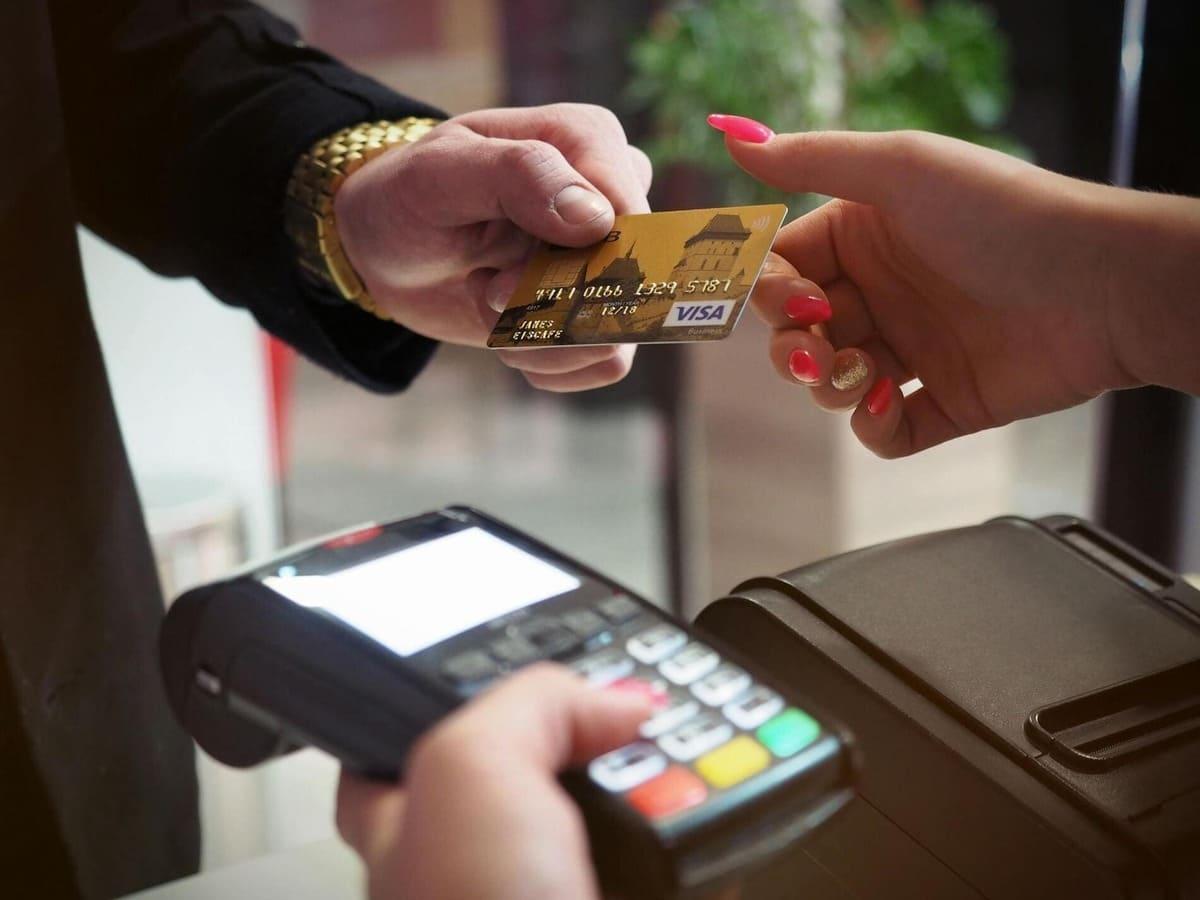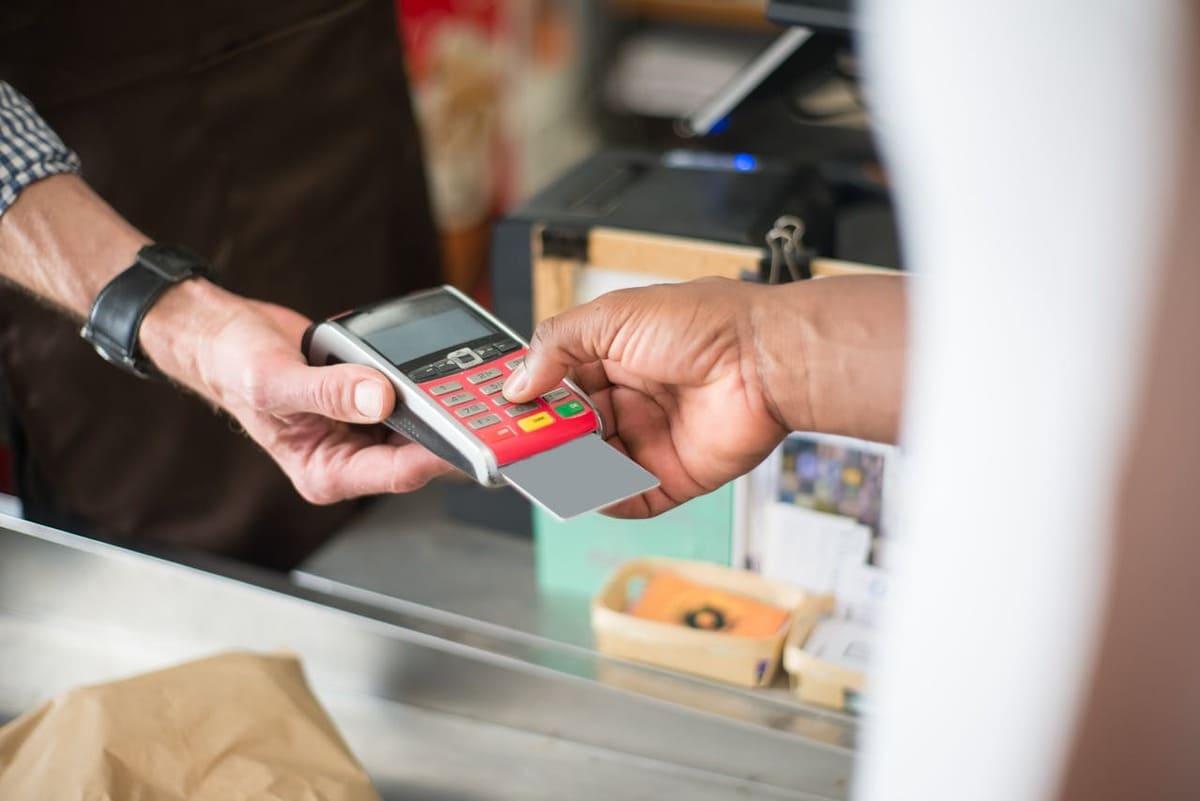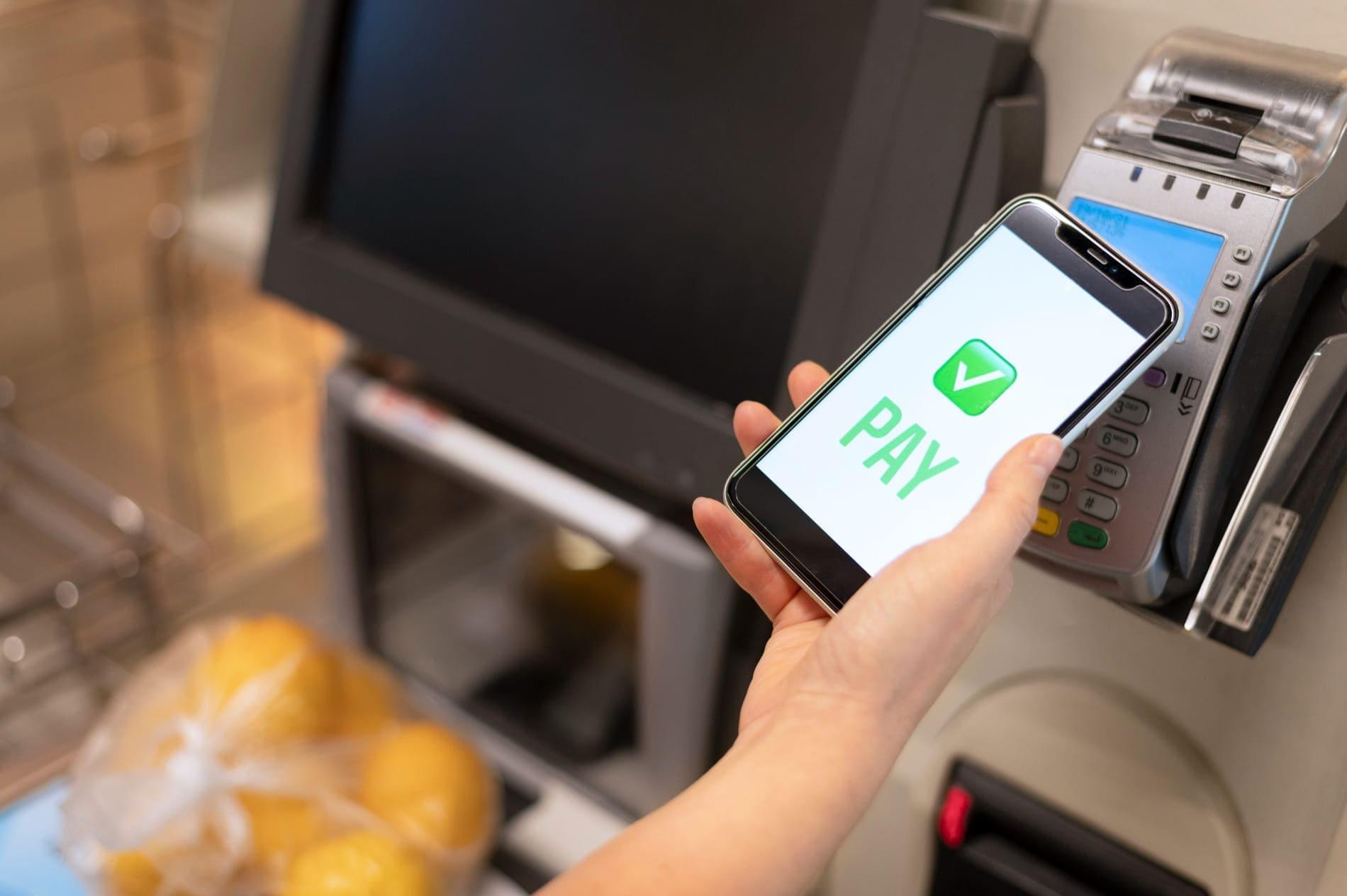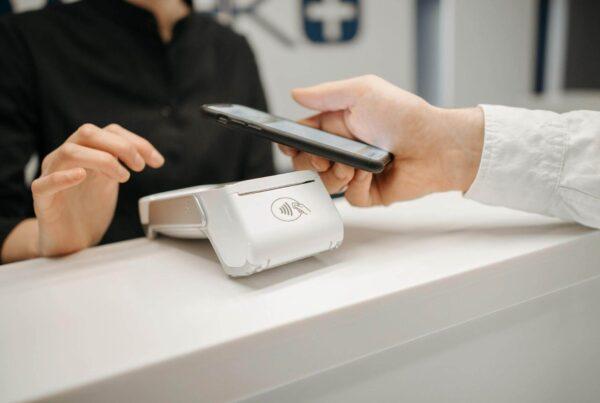EMV stands for Europay, Mastercard, and Visa — the three credit card companies that developed and spread EMV payment security standards worldwide. Developed in the mid-1990s, EMV employs different security technologies to safeguard customers’ financial data from malicious attacks. As a result, EMV payment has become particularly prevalent among card issuers, retailers, and shoppers who seek protection against rampant financial fraud and data thefts.
Retailers and customers in most parts of the world are now using EMV technology, from Europe to Africa. Recent statistics show that up to 93.91% of global card-present transactions use EMV cards from July 2022 to June 2023 and 69.35% of cards issued globally in 2022 are EMV.
To help you understand why EMV has gained such impressive adoption, we provide an overview of the EMV payment method in this post, including its benefits, drawbacks, how it works, and how to deploy it for your retail stores. Let’s dive in!
What is EMV payment?

EMV payment is a payment type that lets customers use EMV chip cards to pay for their in-store purchases. These cards are central to EMV technology, which uses multiple security methods to protect cardholders’ information.
In particular, EMV utilizes a computer chip embedded in credit and debit cards to store and transmit transaction data. The chip generates a unique code for each purchase and sends this code to a specific card reader to process a transaction. This mechanism impedes fraudsters from obtaining credit card information to commit fraud like counterfeiting cards. Therefore, EMV payment processing is more secure than traditional magstripe payments. Card issuers, retailers, and shoppers all gain enormous protection from this payment type.
In addition, EMV payment is best at securing in-store transactions. Retailers must have EMV payment terminals in place to accept EMV cards at brick-and-mortar stores. While customers swipe magstripe cards to start paying, they insert their chip cards into the POS terminals to make payments. Subsequently, customers enter their personal identification number (PIN) or give their signatures to verify and authorize the purchase.
Even though EMV ensures high security for card-present transactions, the protection for card-not-present (CNP) transactions is somewhat restricted. Consequently, EMVCo has developed other methods to improve security for CNP payments. The most noticeable technologies are EMV Payment Tokenization and EMV 3-D Secure.
What are EMV chip cards?

An EMV chip card refers to a credit or debit card equipped with a powerful computer chip that transfers payment data to card terminals for transaction processing.
EMV chip cards store customer data on a chip, not on the magnetic stripes printed on the back of the cards, and only work with specific terminals. Consequently, these cards are less vulnerable to financial attacks and fraud such as counterfeit fraud than magstripe cards.
EMV chip cards come in 2 types, indicating different ways cardholders authorize their purchases. Look at the distinction between the 2 EMV chip types as follows.
- Chip and PIN: This type requires customers to enter a PIN to verify identity and authenticate a transaction at the point of sale. Since only the legitimate owner knows this secret number associated with the card, EMV chip and PIN cards ensure high transaction safety.
- Chip and signature: Transactions using chip and signature need cardholders to sign their names to complete the purchase. As it’s easy to copy or fake a signature, chip and signature have higher risks of counterfeit fraud than chip and PIN EMV.
Many new chip cards now come with NFC technology that enables EMV contactless payments. Customers can tap their cards or EMV payment devices with mobile wallets over the card readers to process payments swiftly and securely.
Besides creating dynamic codes to defend transaction data, EMV chip cards also come with different authentication methods to minimize the chances of unauthorized card use, especially when the card is lost or stolen.
How does EMV technology work?

While magnetic strips on cards transmit real card numbers to card readers, EMV chips produce one-time codes for each purchase and send them to the retailers’ card terminals. In this way, EMV technology helps safeguard customers’ sensitive payment data during the transaction, thereby lowering the risks of card fraud.
To process payments, the EMV chips communicate with a dedicated card terminal to transfer payment data. Below, we demonstrate how EMV chip payments work.
- After customers present an EMV card to pay for an in-store purchase, merchants insert the card into an EMV chip card reader with the chip end first instead of swiping. Another way is to tap an NFC-enabled chip card or mobile device over the terminal to make contactless payments.
- Then, the EMV payment card transmits an encrypted code that contains the card information, not the real card numbers as in the case of magnetic strips, to the payment terminal. The EMV chips generate a unique code for each purchase, which means these codes are one-time and can’t be replicated, thus preventing fraudsters from stealing the card data to create a counterfeit card or use the card illegally. This is what makes an EMV payment solution more secure than a magstripe payment.
- After that, customers enter their PIN or provide their signature to validate the transaction depending on the card types they’re using: chip and PIN or chip and signature.
- The payment terminal communicates the received payment data to the merchant’s POS, which sends the information to the EMV payment system. The payment processor then reaches the card issuer and asks for authorization.
- The card issuer approves or rejects the request for payments, then the merchant can complete the transaction on the POS and remove the cards.
Benefits and potential drawbacks of EMV in credit card processing

Although EMV helps secure customers’ payments, it comes with certain disadvantages that can hold retailers back from deploying the technology in credit card processing. Let’s learn more about the benefits and drawbacks of EMV in handling credit card transactions.
Benefits:
- Enhanced security and fraud prevention: EMV chip technology uses multiple layers of security to protect cardholders’ information from exposure. The unique transaction codes EMV chips generate for each purchase deter customers’ card information from falling into fraudsters’ hands and make duplicating EMV cards almost impossible. Even in the event of data breaches, fraudsters can’t replicate or use the one-time codes for ill purposes like counterfeit cards or unauthorized transactions. Besides, authentication methods including PIN and signature also increase the security level of the customers’ payments.
- Customer trust: Using EMV payment solutions removes customers’ worries about the potential risks of revealing their credit card data. Once knowing that their financial information receives protection, customers tend to use credit and debit cards for payments more frequently. Besides, they also have more trust in retailers and make repeat purchases.
- Growing popularity: EMV has gained widespread acceptance across the globe; therefore, customers can confidently pay with EMV chip cards in plenty of countries. Retailers can also attract more customers who prefer EMV payment, contactless payments, or mobile wallets.
Drawbacks:
- Limited protection for card-not-present purchases: The level of security that EMV provides largely relies on the chip at the back of the cards, so these EMV chips can’t maximize their protective strength for card-not-present transactions like online or phone-based purchases. In these cases, retailers have to use additional security methods to keep the transactions safe.
- Expenses for POS system upgrade: To employ EMV technology, retailers need to incur the costs of investing in EMV card readers and upgrading the POS system to assist EMV payments. These costs can be high for small retailers and hinder them from using EMV for credit card processing.
How to accept EMV chip cards at your retail store?

EMV chip cards are highly beneficial to both customers and retailers. Not only do they provide customers with more secure payment options, but they also render retailers exempt from the financial loss and liability resulting from fraudulent transactions. Therefore, accepting EMV chip cards at your stores is necessary to ensure a safe and secure checkout experience for your customers.
Enabling your retail store to accept an EMV payment is no hard work but needs some consideration.
- First, you need to ensure that your existing POS and payment systems can integrate seamlessly with EMV chip technology.
- Additionally, your POS should connect well with various 3rd-party EMV payment systems such as Stripe and Square.
- It’s also ideal if your POS system and payment processing services facilitate other types of chip card payments like EMV contactless payments or mobile wallets.
In some cases, you have to upgrade or replace your current card reader with an EMV payment terminal. As chipped debit cards or credit cards still come with magnetic stripes, retailers without EMV-compatible equipment still can process chip transactions. However, they’ll have to take responsibility for any fraudulent transactions that happen.
Magestore’s Magento POS and Shopify POS are feature-rich POS software that can connect well with unlimited payment providers and POS terminals to accept EMV payments. Magestore POS also supports a wide array of payment types like credit, debit cards, contactless payments, and digital wallets, which help you cater to the diverse payment preferences of your customers.
You also need to educate your employees and customers so they can be aware of the benefits EMV payment solutions bring back and how to handle them correctly.
Conclusion
EMV chip technology uses data encryption, tokenization, and authentication to ensure highly secure payments and protect customers and businesses from credit card fraud. As a result, it has become a necessity for retailers of different sizes at a global scale.
Customers, business owners, and card issuing banks can all benefit from using EMV for credit card processing. However, some retailers might be reluctant to deploy EMV technology as the investment costs for new EMV card readers can be high. Considering the long-term advantages and savings that EMV offers, adopting EMV technology is a must if businesses don’t want to be left behind.
FAQs
What is EMV in retail?
In retail, EMV indicates a payment standard for credit and debit cards developed and popularized by 3 major credit card processing companies, which are Europay, Mastercard, and Visa.
What is the difference between an EMV and a chip?
A computer chip, or chip, is a small piece of semiconducting material that consists of many transistors to transmit data. On the other hand, EMV refers to EMV technology that uses a computer chip on a credit or debit card to transfer encrypted data to an EMV reader securely.
What does EMV stand for in POS?
In POS, EMV means EMV payments, which means customers can use a credit or debit card embedded with an EMV chip to make purchases in-store.
Is EMV the same as contactless?
No, EMV is different from contactless. EMV is a payment technology that uses encryption, tokenization, and authentication methods to transfer payment data securely between a credit card and an EMV chip reader. Otherwise, contactless payments use NFC technology that allows different devices to communicate and transmit data wirelessly over a short range.
Is an EMV chip the same as an RFID chip?
No, EMV chips are not the same as RFID chips. EMV chips encode and transfer data from an EMV chip card to a specific card reader to process a transaction. Meanwhile, an RFID chip stores and transfers data between devices at a short distance with no touch.














